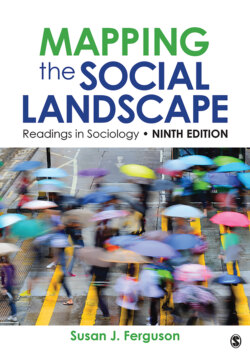Читать книгу Mapping the Social Landscape - Группа авторов - Страница 99
На сайте Литреса книга снята с продажи.
Domestic Skills, Nurturance, and Empathy
ОглавлениеParents accepted, and often even celebrated, their sons’ acquisition of domestic abilities and an orientation toward nurturance and empathy. Of the 25 parents of sons who offered positive/neutral responses, 21 did so in reference to domestic skills, nurturance, and/or empathy. For example, they reported allowing or encouraging traditionally girl toys such as dolls, doll houses, kitchen centers, and tea sets, with that response often revolving around a desire to encourage domestic competence, nurturance, emotional openness, empathy, and nonviolence as attributes they considered nontraditional but positive for boys. These parents were reporting actions and sentiments oriented toward accomplishing gender in what they considered a less conventional manner. One white, low-income, heterosexual mother taught her son to cook, asserting that I want my son to know how to do more than boil water, I want him to know how to take care of himself. Another mother, this one a white, working-class, heterosexual parent, noted that she makes a point of talking to her sons about emotions: I try to instill a sense of empathy in my sons and try to get them to see how other people would feel. And a white, middle-class, heterosexual father emphasized domestic competence when he noted that it does not bother him for his son to play with dolls at his cousin’s house: How then are they going to learn to take care of their children if they don’t? This positive response to domestic activities is consistent with recent literature on parental coding of toys as masculine, feminine, or neutral, which indicates that parents are increasingly coding kitchens and in some cases dolls as neutral rather than exclusively feminine (Wood, Desmarais, and Gugula 2002).
In my study, mothers and fathers expressed these kinds of efforts to accomplish gender differently for their sons with similar frequency, but mothers tended to express them with greater certainty, while fathers were less enthusiastic and more likely to include caveats. For example, this mother described her purchase of a variety of domestic toys for her three-year-old son without ambivalence: One of the first big toys [I got him] was the kitchen center…. We cook, he has an apron he wears…. He’s got his Dirt Devil vacuum and he’s got his baby [doll]. And he’s got all the stuff to feed her and a highchair (white, low-income, heterosexual mother).
Some mothers reported allowing domestic toys but with less enthusiasm, such as a white, low-income, heterosexual mother who said, regarding her three-year-old son, He had been curious about dolls and I just said, you know, usually girls play with dolls, but it’s okay for you to do it too. But this kind of caution or lack of enthusiasm, even in a response coded as positive or neutral due to its allowance of gender-atypical behavior, was more evident among fathers, as the following quote illustrates: Occasionally, if he’s not doing something, I’ll encourage him to maybe play with his tea cups, you know, occasionally. But I like playing with his blocks better anyway (white, middle-class, heterosexual father).
Thus, evident among both mothers and fathers, but with greater conviction for mothers, was widespread support among parents for working to “undo” gender at the level of some of their sons’ skills and values. However, this acceptance was tempered for many parents by negative responses to any interest in what I will refer to as iconic feminine items, attributes, or activities, as well as parental concern about homosexuality.
